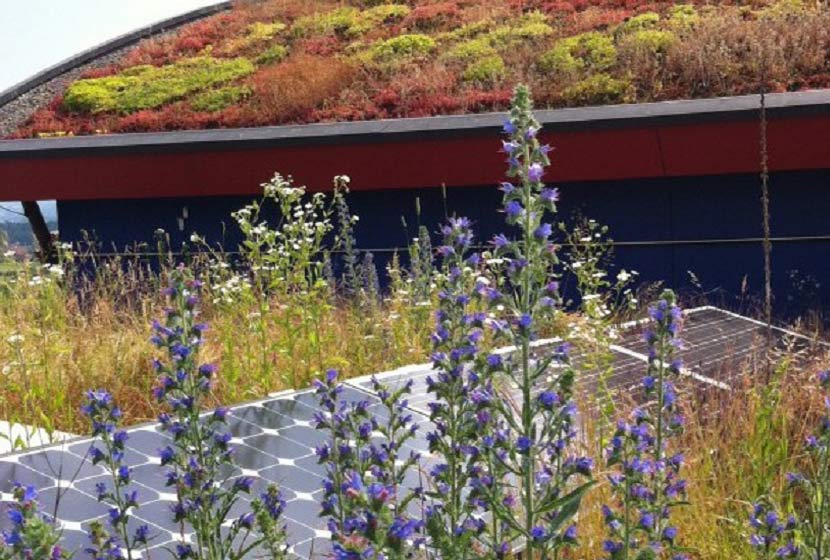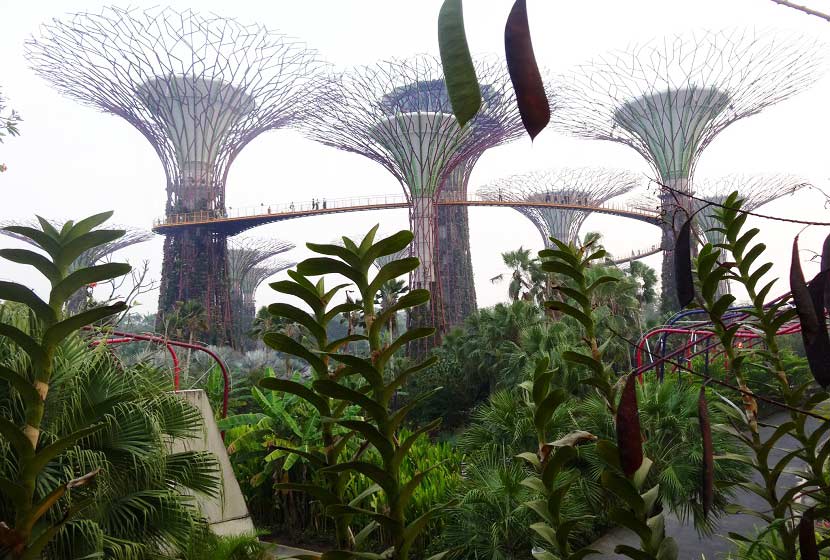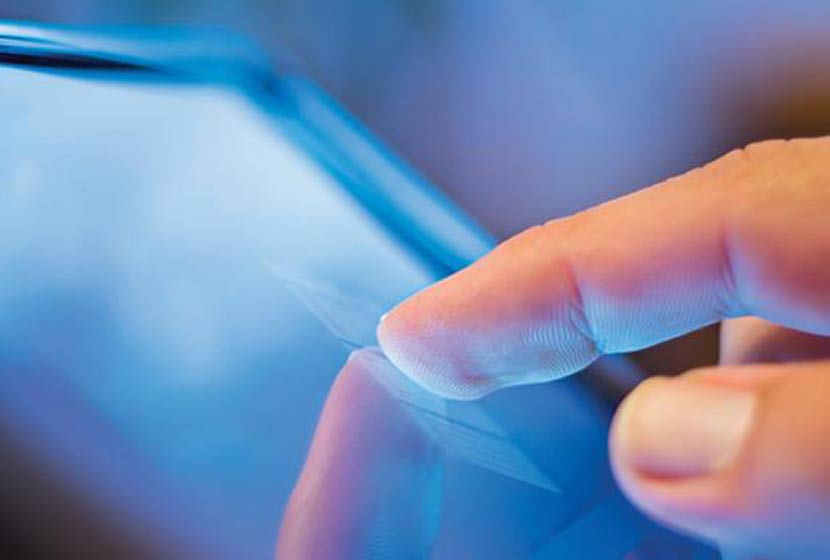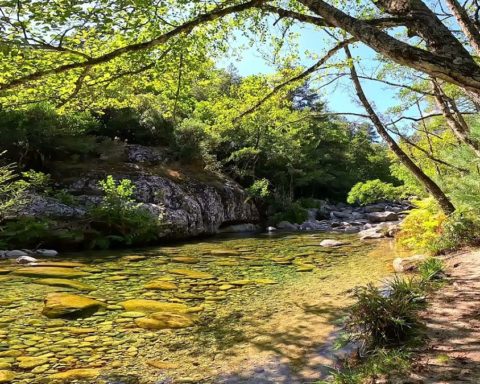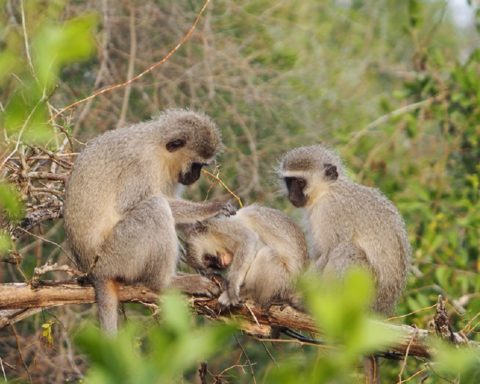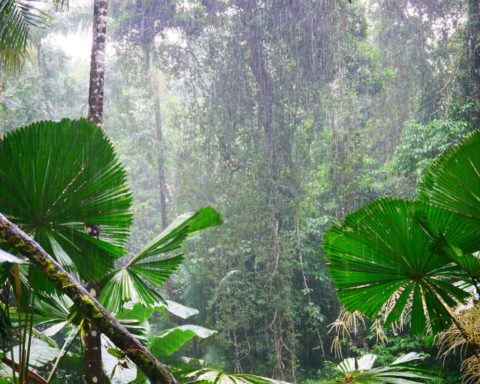Invited in recent years for the production of solar energy, roofs are increasingly being used to host biodiversity and produce new wealth, nature in the city, and with it the return of plant and animal life. Legislators are also interested in the vast spaces represented by roofs: for example, the law of 17 March 2015 on biodiversity obliges shopping centres to install green roofs or to produce energy on their roofs. Roofs represent potential green spaces that are still under-exploited, and are now considered as an asset for biodiversity conservation and energy production, particularly in urban areas.
Init Environnement, created by Brigitte Bonello, is a training organisation specialising in research for the ecological transition of the habitat, offering discovery and training days on green roofs reconciling biodiversity and solar energy production.
An opportunity to change the way we look at green roofs, to better understand the issues at stake and to discover innovations in this field.
Green roofs combining biodiversity and energy production
Ahen solar energy was taking over the roofs and turning them into a welfare space for financial investments, a parallel movement was taking place. With the ambition to protect biodiversity and our health, ecologists, architects, gardeners, urban farmers and scientists have invested in rooftops to restore the functions provided by nature before our cities became unfit for life.
Brigitte Bonello, head of Init Environnement, confides: "Thanks to them, our roofs, strengthened by their new mission, are today considered as an asset for the protection of biodiversity. They have become living spaces, an extension of daily life, where people grow, rest, play, harvest... Today, large cities such as Paris, London and Zurich, to name but a few, are integrating or encouraging the greening of roofs in their urban planning and architectural projects".
Thanks to green roofs, cities can compensate for lost ground surface and restore ecological functions degraded by urbanization. Indeed, green roofs contribute to cooling the air in summer, trapping fine particles and retaining water runoff during heavy rainfall.

Plant diversification: a new impetus for green roofs
Due to insurance problems that divided the professionals, green roofs were until now limited in their form to the so-called extensive type, and therefore could only accommodate one type of plant, the sedums.
Brigitte Bonello points out: "This resulted in uniformly carpeted, often reddish, roofs, a disappointment that discouraged many who were concerned about the aesthetic value of the roofs. Moreover, despite its resistance and covering power, this type of vegetation contributes little to the development of biodiversity and its benefits: sedum mats are generally too undiversified and the substrate too thin to be conducive to biodiversity. »
However, green roofing is undergoing a major transformation and nature can finally be at the heart of the concerns, motivations and designs of projects.
Brigitte Bonello continues: "It is said that nature doesn't like neatness; green roofs are now being approached with a new concept: imitating nature in order to strive for a natural balance and the return of an ecosystem. Thanks to a thicker substrate, a diversification of plant species, the creation of reliefs and small shelters to accommodate small species of wildlife, green roofs are becoming favourable areas for biodiversity. »
This new concept of green roofs is defined by :
- the diversity of plant species and species of local origin (wild flowers, honey seeds), better adapted to the regional climate and therefore more resistant to extreme conditions than monoculture ;
- the possible return of useful local species, invertebrates, bees, butterflies and other pollinators ;
- the absence of dangerous plant protection products.
What benefits? This new green roof design, a sort of urban canopy, has the advantage of improving the thermal and hydric inertia of the roof. The ecological advantages of the green roof are multiple: watertight protection, sound insulation, protection against thermal shocks, capture of atmospheric pollutants, thermal inertia allowing significant energy savings, and of course the preservation of biodiversity. Its capacity to retain water offers an original solution to the problem of rainwater management in urban sites. In addition to these elements, such a roof also provides visual comfort, as this small natural space contributes to beautifying the landscape and even enhancing the heritage. In short, a green roof protects the building and will increase its longevity.

The BioSolar roof, the synergy of biodiversity and energy production
At the forefront of innovation in green technologies, the BioSolar roof breaks with the tradition of monoculture sedum cultivation to develop biodiversity by bringing together plants and energy production.
"By bringing together plants and green technologies, the BioSolarRoof project takes up a set of themes at the heart of our current concerns: health, well-being, energy, ecosystem balance and the intelligent use of energy. Professionals, such as plant breeders and energy producers, can now work hand in hand for a return to natural balance, contributing to the modern world of technology to allow a return to a healthier life, close to nature. » stresses Brigitte Bonello.
The installation of photovoltaic panels creates shaded areas and different humidity levels, which are favourable to plant and animal diversity. Based on the principle of symbiosis, vegetalisation optimises the production of solar energy. The evapotranspiration of the plants cools the photovoltaic panels and increases their efficiency during the hot season, in spring and summer.
Brigitte Bonello concludes: "Paris cultivates its roofs... Urban agriculture is seducing and developing all over the world. Fashion or pleasure, an escape route for some, the beginning of a return to simple life for others, the alchemy of low tech and high tech, it is perhaps quite simply the ecological transition...".
Information and training meetings
In order to make known the techniques used by informed professionals, Init Environnement invited Nathalie Baumann, ecologist, in charge of the organisation and execution of green roofs and Biosolar roofs for the cities of Lausanne and Basel, in May, to present the new green roofs and Biosolar roofs, where "Let's cultivate our roofs" days were dedicated to exchanges and experiences, with building specifiers, landscape designers and local authorities, which enabled them to discover examples of cities and buildings transformed by biodiversity: how green roofs and solar panels can work well together and better perceive the need to reintroduce biodiversity into urban areas.
Training courses on the design of biosolar roofs have also been organized: for horticulture and landscape but also building trades, training sessions pnt addressed the design, choice of plants and substrates, implementation techniques and maintenance of green roofs, known as BioSolar. They thus provide proof that the need to green cities and buildings can bring beauty, cheerfulness and life... and when we know what happens to our bees, that's no small thing!
More information: http://www.init-environnement.com/

About Brigitte Bonello
After studying psychology, Brigitte Bonello began a career in human resources and in 1996 created a company providing HR consulting and job coaching. Her vision "of so many unemployed people, of grey matter left behind in France" and her awareness of our responsibility in the face of environmental problems led her to create a second company in 2005: Init Environnement. Wishing to warn, raise awareness and inform specifiers about what needed to change and about solutions in the building industry, it brings together expert panels and organises conferences on eco-construction, energy performance, biosourced materials, etc. In 2006, Init Environnement opened for the first time in France a diploma course dedicated to ecological energy renovation. Passionate about biodiversity, she now joins a team of European experts and academics to work on the subject of BioSolar roofs.

